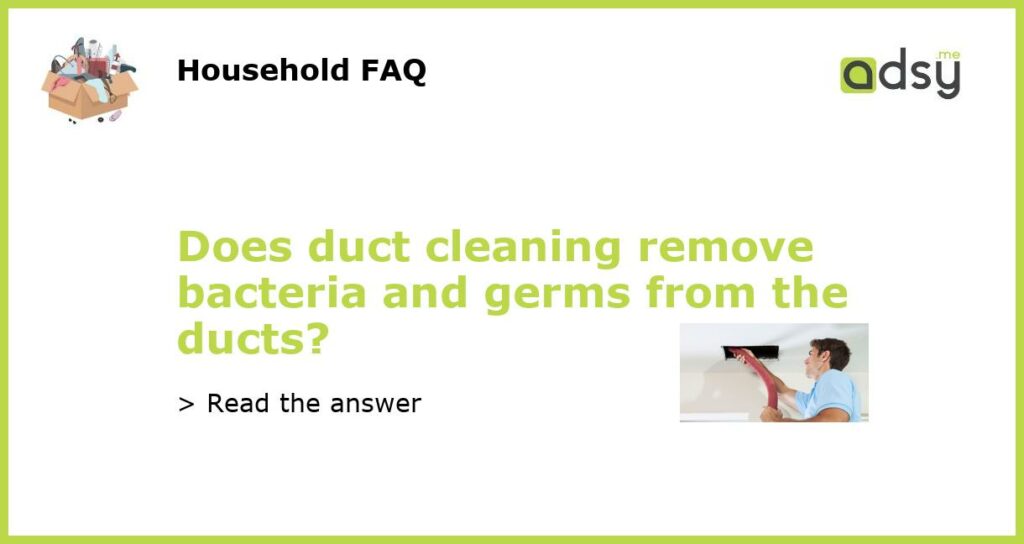Does duct cleaning remove bacteria and germs from the ducts?
When it comes to indoor air quality, many homeowners are concerned about the presence of bacteria and germs in their ducts. Duct cleaning is often touted as a solution to this problem, but does it really remove bacteria and germs from the ducts? The answer is not as straightforward as you might think. While duct cleaning can help improve the overall cleanliness of your ducts, it may not completely eliminate bacteria and germs.
The basics of duct cleaning
Before we delve into whether duct cleaning removes bacteria and germs, let’s first understand the basics of what duct cleaning entails. Duct cleaning involves the removal of dust, debris, and other contaminants from the ductwork of your HVAC system. This typically involves the use of specialized tools and equipment to reach deep into the ducts and remove any accumulated dirt and debris.
Can duct cleaning remove bacteria and germs?
While duct cleaning can help improve indoor air quality by removing dust and debris, it is not specifically designed to target and eliminate bacteria and germs. Bacteria and germs can be present in your ducts due to various factors, such as moisture and organic matter. While some studies suggest that duct cleaning can reduce the presence of bacteria and germs, it may not completely eliminate them.
Additionally, the effectiveness of duct cleaning in removing bacteria and germs can vary depending on the cleaning methods used and the condition of the ducts. If the ducts are heavily contaminated or if there are underlying issues causing the presence of bacteria and germs, such as leaks or standing water, duct cleaning alone may not be sufficient to fully address the problem.
Addressing bacteria and germs in the ducts
If you are concerned about bacteria and germs in your ducts, there are other steps you can take in addition to duct cleaning to help improve indoor air quality. These include:
- Using air cleaners: Air purifiers or cleaners can help remove airborne contaminants, including bacteria and germs, from the indoor air. These devices work by filtering out particles and contaminants through various methods, such as HEPA filters or UV light.
- Addressing moisture issues: Bacteria and germs thrive in damp environments, so it is important to address any moisture problems in your home. This can include fixing leaks, improving ventilation, and reducing humidity levels.
- Inspecting and cleaning HVAC components: Apart from the ducts, other components of your HVAC system can also harbor bacteria and germs. Regular inspections and cleaning of these components, such as the air handler, coils, and drain pans, can help prevent the spread of bacteria and germs throughout your home.
While duct cleaning can help improve indoor air quality and remove dust and debris, it may not completely remove bacteria and germs from the ducts. To address bacteria and germs in your ducts and improve indoor air quality, consider using air cleaners, addressing moisture issues, and inspecting and cleaning other HVAC components. It is also important to note that the effectiveness of duct cleaning can vary depending on the methods used and the condition of the ducts. Consulting a professional HVAC technician can help determine the best course of action for your specific situation.

